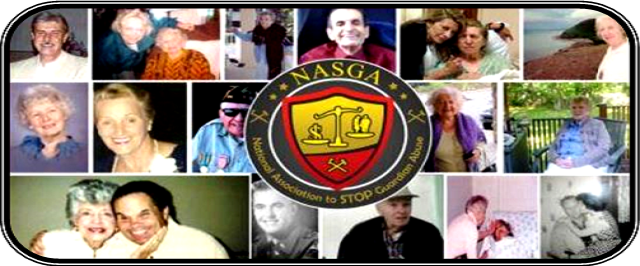 |
| Micha Shaley |
Elder Abuse is one of the most overlooked public health hazards in the United States. The National Center on Elder Abuse estimates that between one and two million elderly adults have suffered from some form of elder abuse. The main types of elder abuse are physical abuse, sexual abuse, emotional and psychological abuse, neglect and self-neglect, abandonment, and financial exploitation. Elders with dementia are thought to be at greater risk of abuse and neglect than those of the general elderly population.
One occasionally reads of sensationalized newspaper stories of elderly Alzheimer’s and dementia victims who were subjected to abuse or neglect while they were residents in long term care facility.
Based on such newspaper accounts, one would have the impression that most cases of the abuse or neglect of Alzheimer’s or dementia victims takes place in such facilities. While such sorry events and incidents rarely do take place in such facilities, they are far from the norm. Recent studies however, have established rather clearly the troubling fact that most cases of the abuse of Alzheimer’s and dementia victims actually take place in the family home setting, by their own family members or paid care givers.
Potential indicators of abuse
Below are some potential indicators for each type of elder abuse. Please be aware that this does not represent a definitive listing.
Passive and active neglect
- Evidence that personal care is lacking or neglected
- Signs of malnourishment (e.g. sunken eyes, loss of weight)
- Chronic health problems both physical and/or psychiatric
- Dehydration (extreme thirst)
- Pressure sores (bed sores)
- Overt signs of physical trauma (e.g. scratches, bruises, cuts, burns, punctures, choke marks)
- Signs of restraint trauma injury – particularly if repeated (e.g. sprains, fractures, detached retina, dislocation, paralysis)
- Additional physical indicators – hypothermia, abnormal chemistry values, pain upon being touched
- Repeated “unexplained” injuries
- Inconsistent explanations of the injuries
- A physical examination reveals that the older person has injuries which the caregiver has failed to disclose
- A history of doctor or emergency room “shopping”
- Repeated time lags between the time of any “injury or fall” and medical treatment
- Unusual banking activity or bank statements (credit card statements, etc.) no longer come to the older adult
- Documents are being drawn up for the elder to sign but the elder cannot explain or understand the purpose of the papers
- The elder’s living situation is not commensurate with the size of the elder’s estate (e.g. lack of new clothing or amenities, unpaid bills)
- The caregiver only expresses concern regarding the financial status of the older person and does not ask questions or express concern regarding the physical and/or mental health status of the elder
- Personal belongings such as jewelry, art, or furs are missing
- Signatures on checks and other documents do not match the signature of the older person
- Recent acquaintances, housekeepers, “care” providers, etc. declare undying affection for the older person and isolate them from long-term friends or family
- Recent acquaintances, housekeeper, caregiver, etc. make promises of lifelong care in exchange for deeding all property and/or assigning all assets over to the acquaintance, caregiver, etc.
- Psychological signs:
- Ambivalence, deference, passivity, shame
- Anxiety (mild to severe)
- Depression, hopelessness, helplessness, thoughts of suicide
- Confusion, disorientation
- Behavioral signs:
- Trembling, clinging, cowering, lack of eye contact
- Evasiveness
- Agitation
- Hypervigilance
- Trauma to the genital area (e.g. bruises)
- Venereal disease
- Infections/unusual discharge or smell
- Indicators common to psychological abuse may be concomitant with sexual abuse
Full Article & Source:
Abuse and neglect of the Alzheimer’s patient -red flags

2 comments:
I can't believe this author is taking the stance that family is the abuser over a facility. I have the feeling he's just talking with no direct experience.
Good information. Thanks!
Post a Comment